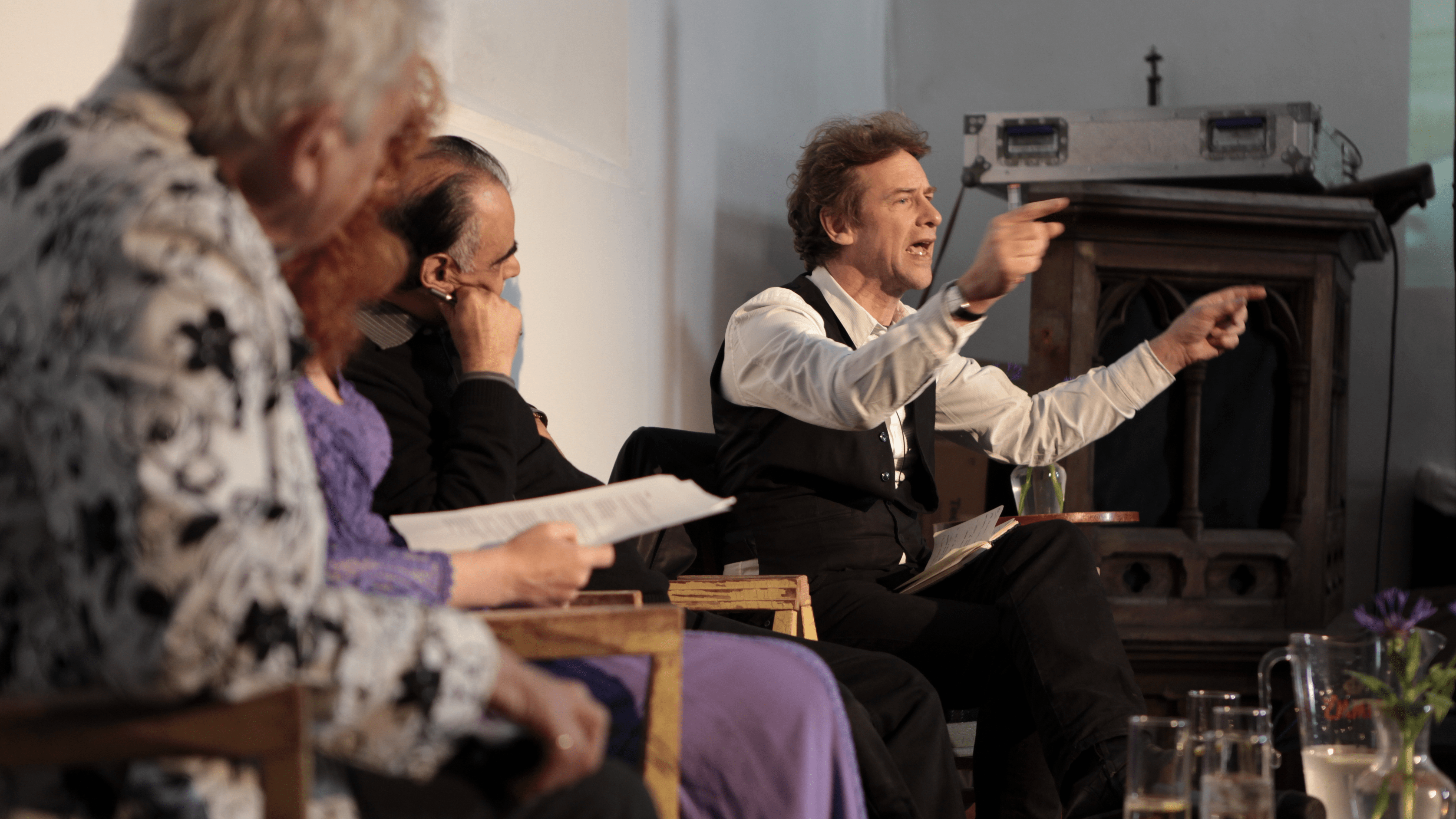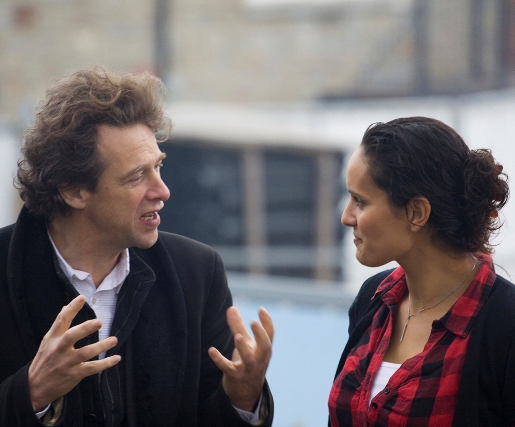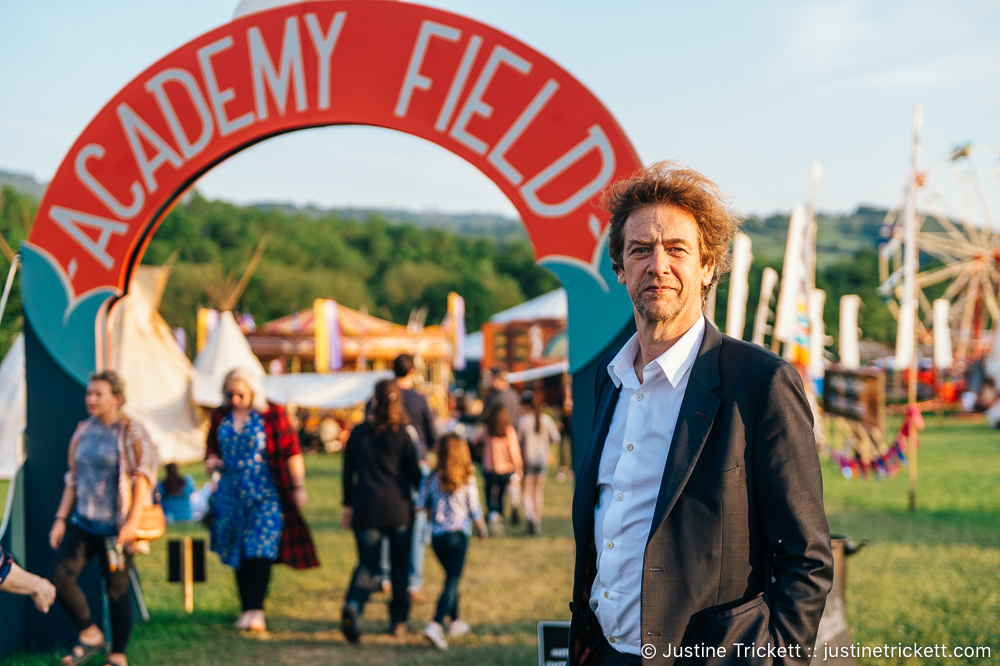Biography

Hilary Lawson is a post-realist philosopher, who proposes that what we take to be reality is the outcome of a process of closure that is central to human understanding and experience. His theory was first outlined in ‘Closure: a story of everything’ (Routledge, 2001) which has been described as ‘the first non-realist metaphysics’. He is also the Editorial Director of the IAI, (Institute of Art and Ideas), and the philosophy festival HowTheLightGetsIn.
Early career
Hilary Lawson graduated with a first in PPE (Philosophy, Politics and Economics), from Balliol College, Oxford, having been awarded a scholarship for his work as an undergraduate. He continued at the college begining a DPhil on self-reference and became the basis for his first philosophical work ‘Reflexivity: The Post-Modern Predicament’ (Hutchinson, 1985) published as part of a series on Modern European Thought. The book made the case that self-reference, or reflexivity as Lawson described it, is driving force throughout twentieth century European thought and particularly in the philosophy of Nietzsche, Heidegger, Derrida and Wittgenstein.
His first attempt to provide a preliminary response to the self-referential predicament in which he argued contemporary philosophy and culture had become enmeshed came in a short manifesto titled ‘After Truth’ published jointly with Hugh Tomlinson, the translator of Gilles Deleuze, under the pseudonym ‘The 2nd January Group’. He went on to author and co-edit a series of essays ‘Dismantling Truth: Reality in the Postmodern World’ in which he argued ‘all our truths are, in a sense fictions – they are stories we choose to believe’.
During this period amongst others he collaborated with the American philosopher, Richard Rorty, who contributed to the ‘Dismantling Truth’ collection and also took part in two documentary films that Lawson wrote and directed. ‘Science…..fiction?’ was transmitted by the BBC in their Horizon strand, controversially arguing that science is not powerful because it is true, but we take science to be true because it is powerful. The other, ‘The First World’ (Channel 4) focussed on the outset of western thought exploring the legacy of Pythagoras and Plato.
Alongside his philosophical work, Hilary Lawson pursued a career in broadcasting, writing and directing a number of award winning documentary programmes and creating ‘The World This Week’ which became the UK’s longest running international current affairs programme.
Closure Theory
While Lawson began his philosophical development at Oxford, one of the leading centres of analytic philosophy, he became convinced that Wittgenstein had correctly identified that paradoxes of self-reference undermine the whole analytic project. Having in his book ‘Reflexivity’ made the case that much twentieth century western thought is enmeshed in similar paradoxes of self-reference, Lawson set out to provide a means to respond to this predicament and to find a way forward.
‘Closure: a story of everything’ was his central attempt to do this. Published in 2001 and it had taken Lawson more than a decade to write. On the one hand, ‘Closure’ can be seen as a theory about how we make sense of the world. It argues that the world is not a thing or combination of things waiting to be discovered or described and proposes that we hold the world as ‘open’. We make sense of ‘openness’ through the process of closure, through which we hold the world as if it was something in particular. Sensation, thought and language are all forms of closure which enable us to realise, or make real, things and reality.
The work details how the process of closure operates and how it influences the structure of knowledge and our pursuit of truth. One of the consequences of the theory is that humans are by no means unique in using closure to enable them to intervene successfully. Lawson argues that all living organisms operate on similar principles and that the same principles of closure will prove effective if applied to AI.

On the other hand, Closure can be seen as an attempt to provide a theory which overcomes the paradoxes of self reference in the process providing a new account of language and its relationship to reality. It seeks to do this by demonstrating that it is possible to provide an account of the world which is not a description of reality, but which is nevertheless capable of being precise, highly effective and enabling radical change to our circumstances.
Lawson has more recently gone on to argue that in the same way that in the late nineteenth century Nietzsche called time on the notion of God, so in contemporary culture it is reality that we need to abandon, and that in this sense we should see reality not as a scientific but as a theological notion that has had its value but which we should now give up in order to further our ability to intevene successfully in world to pursue our desires and goals.
In the early 2000s, Lawson applied the theory of openness and closure to video art developing the the new medium of Video Painting. The work aims to free moving images from narrative closure enabling them to be held open by the viewer and thereby rediscover the unlimited mystery of the world. A collective of artists was formed to pursue the medium and the works are now represented by Open Gallery.

In the early 2000s, Lawson applied the theory of openness and closure to video art developing the the new medium of Video Painting. The work aims to free moving images from narrative closure enabling them to be held open by the viewer and thereby rediscover the unlimited mystery of the world. A collective of artists was formed to pursue the medium and the works are now represented by Open Gallery.
IAI
In 2008, Hilary Lawson founded the IAI, and is currently its Editorial Director. The IAI was initially set up to help revive what he saw as the avoidance of the central philosophical issues of our time both in academic philosophy and culture more widely. Its first philosophy events were centred around debates and presented as a festival of ideas with the title HowTheLightGetsIn, after the Leonard Cohen lyrics ‘there’s a crack in everything, that’s how the light gets in’. In the following years the festival grew rapidly from a few hundred to many thousands attending the event, held annually in Hay-on-wye.
In 2012, the IAI launched the web platform, IAI.tv carrying footage from the festivals. Two years later in 2014, a related online magazine IAI News was launched with articles from leading authors, along with IAI Academy courses providing longer form course material across Philosophy, Science, Politics and Arts. HowTheLightGetsIn added a second annual festival in London from 2017. IAI.tv developed to carry daily posts of new events in the form of debates, talks and interviews, along with regular articles and a growing number of courses. A subscription service was launched in 2019 and a specifically educational offering for universities and schools added in 2021. IAI has been described as ‘Europe’s answer to TED’ and by the Guardian as ‘Back to Big Thinking’. It has a global reach of tens of millions of views.
IAI explores the underlying philosophical issues in four core disciplines, Philosophy, Science, Politics and Arts. IAI’s authors and contributors have included many of the world’s leading thinkers over the past decade. In philosophy: Steven Pinker, Slavoj Zizek, David Chalmers, Mary Midgeley, Saul Kripke, Judith Butler, Noam Chomsky. In science: Brian Greene, Michio Kaku, Lee Smolin, Roger Penrose. In Politics: Ed Milliband, Liz Truss, Shashi Tharoor, Matt Hancock, Shirley Williams, Nigel Lawson. In Arts/Culture: AS Byatt, Martin Amis, Yuval Harari, Shoshana Zuboff, Jared Diamond, Philip Pullman.
